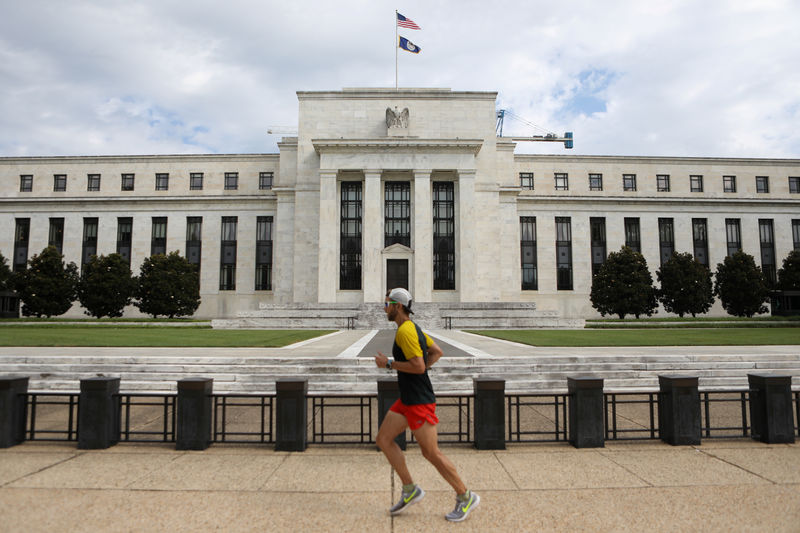BofA warns Fed risks policy mistake with early rate cuts
Investing.com -- The Federal Reserve left interest rates unchanged Wednesday, but acknowledged recent progress on inflation and cooling in the labor market, stoking investor hopes that the central bank could begin cutting rates sooner rather than later.
The Federal Open Market Committee, the FOMC, kept its benchmark ratein a range of 5.25% to 5.5%.
The Fed has kept rates unchanged over the past year as it assessed incoming data to guide policy decisions. Recent reports showing progress on inflation and easing tightness in the labor market suggest that the Fed's restrictive policies are working following a slew of bumpy inflation data earlier this year.
The most recent measure of core personal consumption expenditure, or PCE, index, the Fed's preferred inflation gauge, showed inflation remain steady at 2.6% in the 12 months through June, and is moving toward the central bank's 2% target.
"Inflation has eased over the past year but remains somewhat elevated," the Fed said Wednesday in its July policy statement. That marked a subtle change from June, when the Fed noted that inflation had eased but remained "elevated."
In a sign the cooling in the labor market is now on the Fed's radar, the Fed said the committee is "attentive to the risks to both sides of its dual mandate," signaling a shift from June when the focus remained solely on "inflation risks."
"The Committee judges that the risks to achieving its employment and inflation goals continue to move into better balance, the Fed added.
Still, despite the recent progress, the Fed believes it still needs "greater confidence" that inflation is moving toward 2%.
Many are betting, however, that economic data in the coming weeks would help shift the Fed toward a first cut. A September rate cut is now almost fully priced in, according to Investing.com's Fed Rate Monitor Tool.
In the press conference that followed the meeting, Powell said no decision had been made about future meetings including September, but signaled that the committee is moving closer toward rate cuts should the data continue to show progress on inflation and cooling in the labor market.
"We think that the time [for a rate cut] is approaching ... if we do get the data that we hope we can, then a reduction in our policy rate could be on the table in September," Powell said.
The fed chief also pushed back against concerns that delaying rate cuts risks falling behind the curve and stoking a hard landing.
"We have a lot of room to respond if we were to see weakness," Powell added. "That's not what we're seeing."
